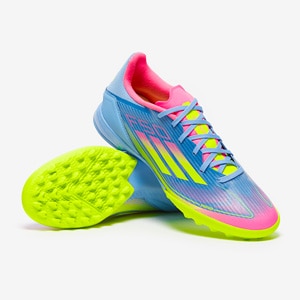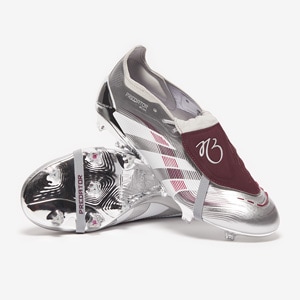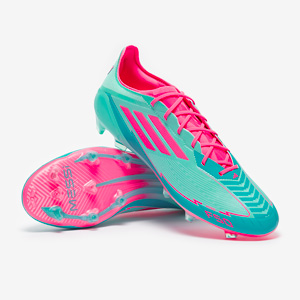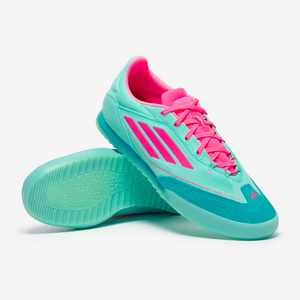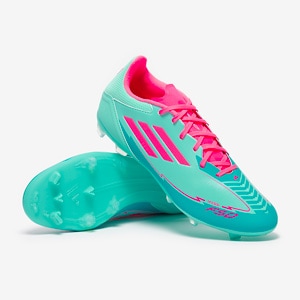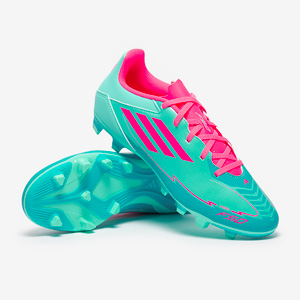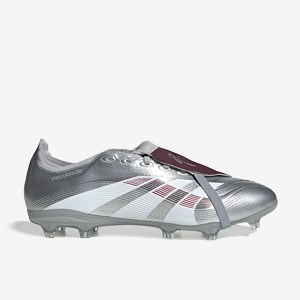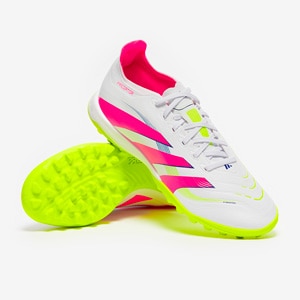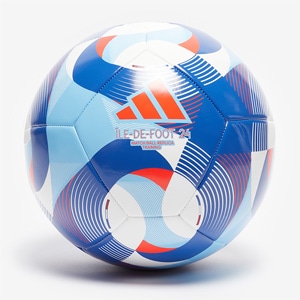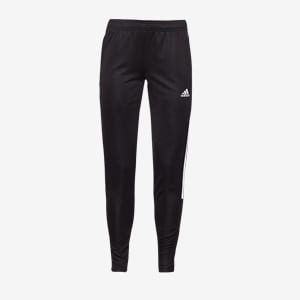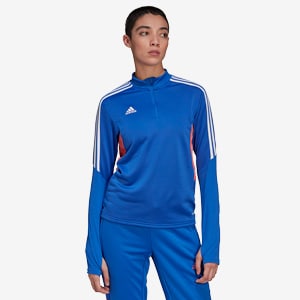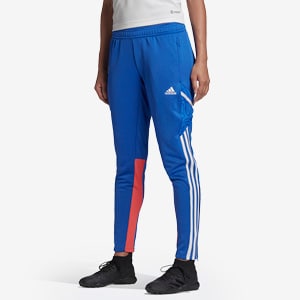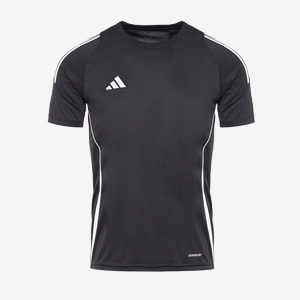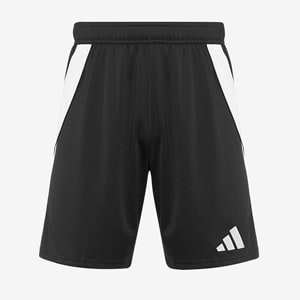adidas Predator Accuracy.3 L IN
Set your sights on victory wearing adidas Predator Accuracy.3 L IN soccer shoes in White/Core Black/Lucid Lemon.
When you’re in total control, you don’t just hit the target, you obliterate it. Time after time after time.Providing the ultimate combination of power and precision, the Predator Accuracy gives you the confidence to strike from anywhere.On the lightweight, flexible mesh upper, 3D texturing gives you all-round control over the ball, amplifying your touch and adding devastating swerve to your shots.The grippy texturing is arranged to allow more flexion than before, so the shoe stays comfortable as you bend the foot to push off or change direction.A multi-directional tread pattern underfoot provides adaptive traction, while an anti-abrasive toe cap adds power to punts.
Cleat Class - Team
Predator
There have been many different models of the Pred over the years, some similar to one another, others wildly different. The core concept, though, has remained the same throughout the decades: the Predator allows you to strike the ball better, in every respect.
That idea goes all the way back to the original Predator. Dubbed “100% legal, 0% fair” in its initial ad campaign – a nod to the cleat’s rubber forefoot fins and the unreasonable advantages they gave for generating power and swerve – the ’94 OG Pred was a true gamechanger in cleat design and a precursor for much of the technology we see on cleats today.
From the Accelerator and Mania back in the day to the Mutator, Edge, and Accuracy of recent years, the Predator’s combination of a sturdy, supportive feel, comfortable fit, and, of course, its excellent passing and shooting capabilities, has made it a favorite with players across the globe. In short, if you want to control the game like Beckham, Zidane, Gerrard, Del Piero, Pogba, Bellingham, and many more, the Pred is the natural choice.
adidas
The 3-Stripes’ pioneering outlook has seen them remain at the forefront of cleat design ever since founder Adi Dassler first started making footwear in the 1920s.
From longstanding leather classics like the World Cup and Copa Mundial to more modern innovations like the all-conquering Predator, their cleats are always built to combine comfort and performance.
The adidas range includes the X for speed, the Predator for control, and the Copa for touch. Whichever cleat suits your style, whether you like to lace up or go laceless, you’ll find options available for every type of surface and every level of play.
Features
• Endorsed by Paul Pogba, Jude Bellingham, and Katie Zelem
• Regular fit
• Lace closure
• 3D texturing
• Low-cut mesh upper
• Durable anti-abrasive toe cap
• Upper features at least 50% recycled content
• Indoor soccer shoes
Additional Information
- Quick Ref: 1002096
- Man. Ref: GY9992
Ground Type Guide
Selecting the correct sole plate for the surface you are playing on is crucial, not only for the performance and longevity of your cleats, but also to avoid the risk of injury.
Using an outsole that isn't designed specifically for the surface on which you are playing may cause premature wear and/or damage that will not be deemed as a fault of manufacture and will prevent the retailer accepting them for a refund or exchange.
Indoor
Indoor surfaces are used for small-sided games such as 5-a-side and Futsal and are usually flat, extremely hard and unforgiving. Indoor outsoles (sometimes known as IN, IT – Indoor Trainer or IC – Indoor Court or Indoor Competition) use non-marking materials such as moulded gum rubber (can be clear or coloured) and provide cushioning, traction, flexibility and durability.
Indoor shoes use pivot points, flex grooves and herringbone patterns for optimum movement and traction.


